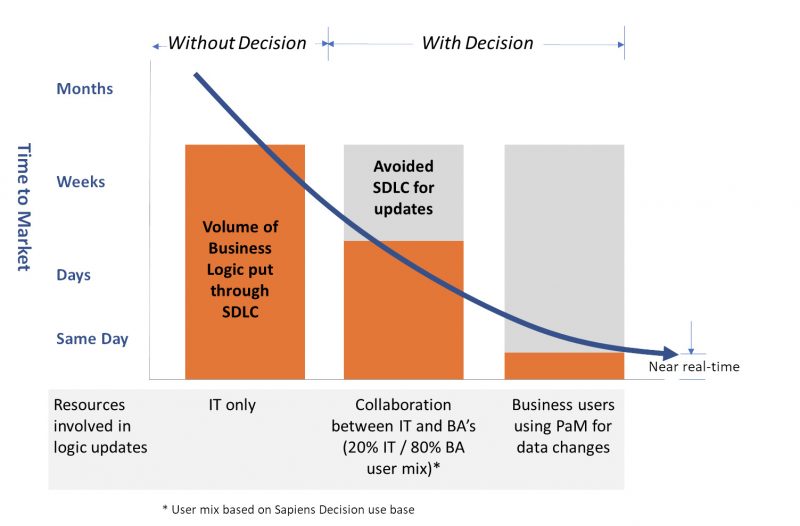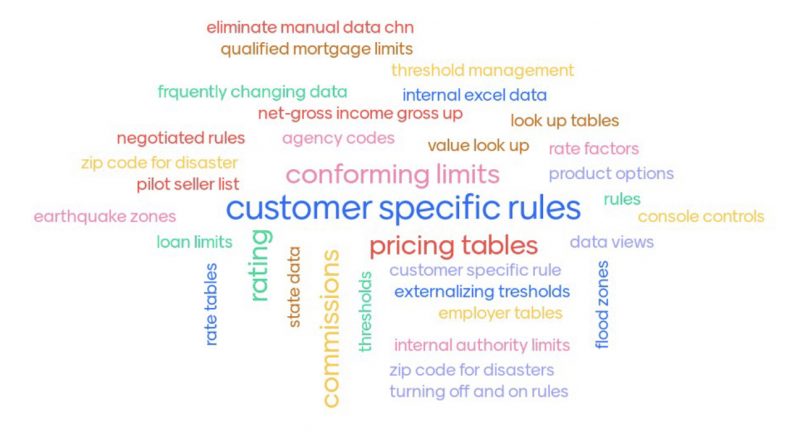Fast Just Got Faster
Sapiens Decision Parameter Management (PaM) module boosts flexibility and accelerates time-to-market.
If you’re using Sapiens Decision, you know the speed, accuracy, and operational efficiency gains of separating your business rules from applications and managing them as independent decision assets.
But what about the variable data you’ve been trying to manage within decision models or with external tools or third-party sources? Think of thresholds, limits, ratios, percentages, or triggers. All integral parts of decisions, but with a tendency to change at a different cadence and with a different structure than the complex business logic that is so well suited for decision models.
Our experience has shown that some logic deployments are merely changes to these variable values and that the underlying logic has not changed at all. We have also seen circumstances where logic that should be managed within Sapiens Decision is instead managed elsewhere due the size of the variable tables or the frequency of change of the variable values.
With our new Sapiens Decision Parameter Management (PaM) module, you can separate these variable data into a specialized management module that accounts for the different requirements these conditions warrant while staying tightly integrated with your existing Sapiens Decision suite. No more logic changes for values only and more ungoverned external workarounds.
As these data values tend to change either more rapidly, at a different cadence, or can be managed by a different set of resources than your decision modelers, separating with a loosely coupled but tightly integrated module gives you additional speed and flexibility on top of your current decision modeling practice. Fast just got faster.
PaM is now available as a separately licensable product from Sapiens Decision. We developed PaM in consultation with our clients across industry. Our intent was to enable the broadest range of use cases where data value changes in logic managed within Decision Manager (DM) could be accelerated over and above the speed already offered by Decision. We saw PaM as a capability to simplify data value updates encapsulated in business logic without the need to create new rule families. PaM will grow the number of use cases involving data table lookups since it allows for the use of large data sets and frequent data updates.
PaM is integrated with DM to create a seamless experience and is applicable in both conditions and conclusions. Highlighted features include:
- Ability to process the largest tables with no limits on the number of tables
- Full versioning of data with complete audit of corrections to data
- Complete control of any effectivie dating, now, future or past
- SSO available with support for common security models
PaM drives faster time-to-market for data changes in logic

PaM is well suited to business logic typical of insurance, banking, mortgage, public sector, and healthcare involving table lookups of any size. An informal survey of the Decision User Group (DUG) generated a wide range of potential use cases for PaM.
Anticipated use cases for PaM by DUG members

PaM enables a new class of user outside of the IT organization with responsibilities related to business data. Data embedded in logic is likely to change faster than business logic itself. By using PaM instead of Decision Manager, these users can make changes quickly and with less skills development. Essentially any business user with basic spreadsheet skills involving table lookups should be able to master PaM.
Learn how PaM can deliver added flexibility in managing business logic and faster time to market. Contact us to schedule a demo and get your team started.
